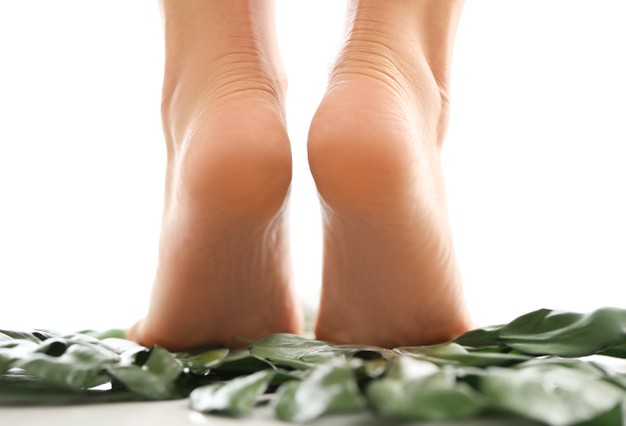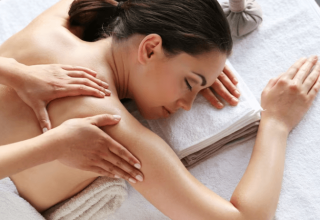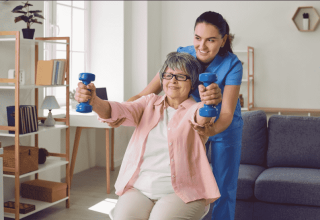What Are the Symptoms of Fallen Arches and What Can You Do About Them?
Did you know that about 75% of Americans will experience some kind of foot issue during their lifetime? 60 million people, or about 25% of the population, in the U.S., have fallen arches.
Humans have 33 joints, 19 muscles, and 107 ligaments in their feet. Since an adult typically takes about 5,000 steps a day, any of these muscles or joints can be hurt or strained.
Do you suffer from fallen arches? Keep reading to learn more about this issue.
What Are Fallen Arches?
Normal adult feet have a curve in the middle, an arch, that is formed by the tendons in the feet and lower legs. When these tendons aren’t working properly this can lead to fallen arches or collapsed arches.
The lack of a curve in the feet is pretty apparent but there’s a way to test if you suffer from flat feet. All you have to do is wet your feet and stand on a flat surface where you’ll be able to see the impression of your foot. If you’re able to see the entire shape of the bottom of your feet then you have fallen arches.
What Are Some of the Causes?
Fallen arches can be caused by a variety of factors. While the majority of children suffer from this condition, their arches will most likely develop as they grow up.
If an adult still has flat feet after childhood it could be a result of genetics, something they were born with. Torn or inflamed tendons can also cause a fallen arch.
Broken bones, arthritis, and nerve damage can cause flat feet as well. While some conditions don’t necessarily cause fallen arches directly, they can increase the likelihood of an adult developing the condition. Obesity, aging, and pregnancy can all lead to fallen arches in both feet.
Symptoms Include Fatigue
While fatigue can be a sign of many different illnesses or can be caused by the stress of everyday life, it can also be a direct symptom of fallen arches. When your feet lay flat on the ground when you stand or walk, this can lead you to get tired much faster than most people.
If you find that you feel fatigued or your feet feel tired with little effort, this is a clear sign of flat feet.
Pain Indicates You Have Fallen Arches
Pain in your feet doesn’t always indicate flat feet but it’s one of the most common symptoms of fallen arches.
If you have constant pain, you should immediately see a trained orthopedic doctor. If the pain is too excessive and physiotherapy cannot help, you might have to go for an orthopaedic surgery Singapore. The procedure is a relatively simple and straightforward one.
If you’re constantly dealing with aching feet and when the pain appears to come from the middle where you should have an arch, or from your heels, this can be a result of flat feet.
Pain in your back and legs can also occur because of the pressure on your tendons and joints. Fallen arch pain is one of the most difficult aspects of dealing with flat feet.
Swelling Is a Usual Sign
Swollen feet are a troublesome thing to deal with. They can cause pain and make everyday walking feel uncomfortable.
If your feet swell regularly, especially if this happens without strenuous activity, this can be a result of fallen arches. If the swelling is concentrated in the middle area of the bottom of your feet then it’s clear that the swelling is occurring because of your flat feet.
Trouble With Everyday Movements Can Be a Symptom
While some people live with flat feet their entire lives without having any issues or complications there are people who do suffer some troubling symptoms. Flat feet can make normal day-to-day activities difficult for some people.
The pain and swelling can make walking difficult. Doing exercise that puts pressure on the feet, like running, might become impossible. Other things like standing in one place or standing on your toes to reach something might be hard to do as well.
Finding the Right Shoes Can Help
If you’re experiencing any of the uncomfortable symptoms that may come with fallen arches then there are things you can do to correct the issue or provide some type of comfort and support.
There are many kinds of shoes for flat feet that can make walking more comfortable and help with the pain. Adding insoles to the inside of your shoes is another great option. These provide the arch support your feet don’t have and can help alleviate pain as well.
Arch supports can be used in place of insoles. They can be worn barefoot too.
Physical Therapy Can Correct Flat Feet
Foot health is an important part of overall health. Correcting flat felt can help alleviate symptoms that keep you from living life to the fullest.
Visiting a physical therapist can help you learn the techniques you need to alleviate pain by stretching the muscles and ligaments in your feet. A physical therapist may teach you how to use a foot rocker to help you with stretching those muscles.
Other Exercises for Flat Feet
There are many other exercises you can practice on your own too. These exercises can help correct flat feet and help you deal with the pain.
Tennis ball rolls require that you roll a ball with your foot for about three minutes at a time. Make sure that you’re giving most of your attention to the arches in your feet.
Arch lifts require you to stand with your feet flat on the ground. You’ll keep your toes touching the ground as you lift your arches up as high as you can. Repeat this exercise about 10 times.
Make sure that your rest and ice your feet often to help reduce pain and swelling.
Fallen Arches Are Not a Life Sentence
Fallen arches are more common than you might think. They can also come with many troublesome symptoms like pain and swelling. You can correct flat feet and reduce pain with shoes or specific exercises though.
Did you find this article useful? Make sure you check some of the other blogs on our site to learn more.



